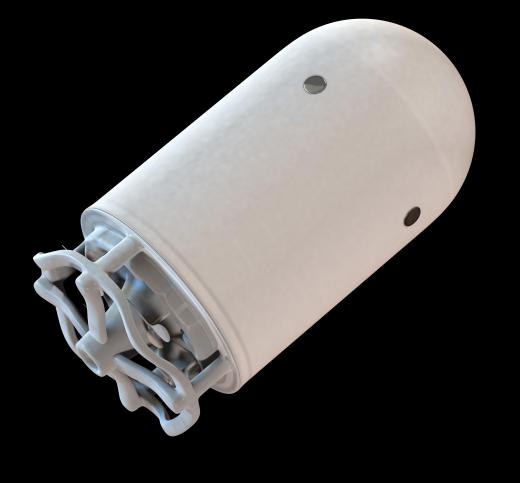What are Nanobots?
Nanobots are incredibly tiny robots, down at a microscopic scale. The name comes from a combination of the nanometer, the scale the devices are built at, and robot. Nanobots have been popular staples in science fiction for some time, and have experienced periods of relative popularity among futurist communities. Although they have been created in a biological context, no actual mechanical nanobots have yet been created, but they remain an area of active research and hold a great deal of promise for a number of fields. The term nanobots may also be occasionally used to describe a macro-robot that is able to interact at the nano-scale, using incredibly tiny tools.
Generally, when discussing nanobots seriously in a scientific context, the term nanorobots is used instead, as nanobots has become more closely associated with science fiction contexts. Nonetheless, nanobots is the term generally used by the public. Many proponents have had to battle public perception that if the technology were ever developed it might pose a threat to humanity, and most contemporary theories of nanorobotics try to take these dangers into consideration.

The most famous doomsday scenario given when discussing nanobots is the so-called grey goo situation. This is a theoretical situation where a swarm of nanobots gets out of control or is plagued with a computer virus, and begins deconstructing all matter, resulting in everything on the planet eventually being turned into a shapeless goo. Most current proponents of nanorobotics point out that failsafes can be installed in the systems to prevent this from happening, and that in fact it relies on a number of things, such as auto-replication, that would not necessarily have to be included in a nanorobotic rollout.

The theoretical uses of nanobots are virtually endless, as their size would allow them to essentially rebuild matter. In this sense, properly programmed nanobots would be able to take raw materials and build them into anything, from proteins to foods to tiny microprocessors. If set up to do so, they could in theory even build more nanobots, through the process of auto-replication, so that a small group of nanobots could quickly develop into a massive swarm capable of large-scale projects.
The medical applications of nanobots are particularly promising, and most researchers focus on these as the likely first uses of the technology. Because nanobots interact at the same scale as many invaders in the body, they could in theory be used as specifically-programmed warriors, helping to fight off cancerous cells or viruses. They could also be used for much more detailed scans of people, to help with early detection or simply to make sure the body is functioning at an optimal level.
Since 2000, the Nanofactory Collaboration project has been working to come up with a research agenda that will further the development of nanobots. Although the technology is still beyond the level of what is currently possible with contemporary engineering, every year nanobots come closer and closer to becoming a reality. As this time approaches, more private industry and governmental groups are investing more money into research and laying out the theoretical uses and limits of nanorobotics.
AS FEATURED ON:
AS FEATURED ON:












Discussion Comments
Nanobots are delivered to us through the air through the chemtrails. They are the means to being controlled by artificial intelligence.
If these nanobots where able to shock you, how would you get them off?
What if you know there are nanobots on you? If they were doing harm to your body, how would you get them off?
i am not worried about the world being turned into "grey goo;" some places might actually look better that way! My main concern is that when nanorobots are constructed and programed, that they could become a serious threat to national security.
Bear with me on this: If mankind is able to construct a microscopic robot which has the ability of going into a person without them knowing it, there is the serious possibility that a virus could be introduced into a person's body and we would have no idea how it was being spread. Or, if man somehow engineers the atomic bomb to a nanorobot's size, then we would have a bigger problem.
Post your comments